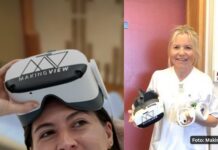(Republisering av blogginlegg fra Unacast, av Kjartan Slette, CEO and Co-Founder)
Any industry needs its reason for existence. Recently the rise of Ad blocking has challenged many traditional web and advertising channels, as users are finding ways of fighting back against irrelevant communication. Advertising will, as we argued for in a recent blog post, adapt and find new ways, and has in fact been at a steady 1% of US GDP the last 100 years. The channels and business models will however now have to evolve rapidly to regain trust and relevance.
Talking about relevance, it is worth noting that the only difference between advertising and communication is, just, relevance. So how do we as an industry become relevant?
There is of course no single answer here, but all questions should start with: What data and insight do I have to support my marketing campaign? It is only by finding the many answers to this question that advertising can become communication.
One, two, let’s go
I would like to propose two possible answers out of the many, and they will not surprisingly revolve around the power of Proximity.
It is worth noting that my definition of Proximity is not centred around a physical beacon interacting with a smartphone to send message A or B. For me Proximity is something grander, something potentially life changing, and definitely industry changing. By populating the physical world with sensors, one is taking the first step towards merging the physical and digital worlds, so that people and brands can seamlessly move between the two.
With Proximity we are finally seeing tangible potential in Internet of Things, where your interaction with the world around you becomes interactive.
If you stop and think for a second, the Internet that we all depend on is based on knowing who interacts with what, at what time. We are now getting closer to that data and insight in the physical space, and not even the ones that work with Proximity 24/7 can hope to fathom the revolution represented by such new knowledge.
Possible answer 1: Pull is dead. Long live push
The days of pull are over. No longer will an end consumer be satisfied and tantalized with having to dig deep into something (typically the phone) to extract information. The combination of proximity, gathered data and previous history will in most, if not all cases, give sufficient information to push the relevant data to the consumer.
When entering a hotel lobby, why should you not be automatically checked in and given your room key on the phone? The hotel knows you are there as your phone senses the beacon in the lobby, and it is a small technical feat to match the booking in their systems with your recent arrival.
When standing in front of the check-in machine in an airport, why should it not automatically print out your boarding pass or send it to your phone? The airport knows you are there as your phone senses the beacon at the machine, and it is a small technical feat to match the booking in their systems with your recent arrival.
Why should you not get information about your favorite shoes now in stock? Why should the restaurant not automatically reserve the next free table for you? Why should the car you looked at in the dealership not pop up as the first thing you see when later visiting the web page?
The answer is that they should. Of course they should. And by understanding what the consumer wants, and pushing it, either in the physical or digital space, we become meaningful and relevant. Advertising becomes communication.
Possible answer 2: Digitally isolated universes are unsatisfying
These last years we have built amazing digital universes for ourselves, from the visual identities shared in Instagram, to showcasing resumes and getting your dream job in LinkedIn. However, our online identity is largely disconnected from who we are as physical beings, and from where we are in the physical world. It lacks the element of experience.
Techcrunch has declared the app revolution as dead, by pointing towards apps that relates to the world around us, like Uber and Tinder. And it is by connecting digital universes to location and proximity that the potential of experience can be truly harvested.
Apps are doorways into these digital universes, and they have found a huge audience. In fact, so huge that many predict that traditional web universes are under attack. I won’t dwell on that particular topic here, but suffice to say that any app that hopes to be relevant also in the future has to evolve together with its users. All children of the digital age know how quickly the tide turns. And the tide of experience could become next digital tidal wave.
The point of these two possible answers is, that no longer will the end consumer tolerate that his or her digital self is detached from the physical self. And we cannot hope to provide relevant digital advertising that takes on the form of communication before these two possible answers have been explored.Of course, there are many more answers that need to find questions that start with: What data and insight do I have to support my marketing campaign? However, we must start somewhere, and the two answers suggested in this blog post are as good as any.
In fact, I would argue that they are better than most.









